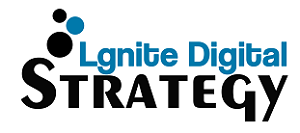Governance, risk and compliance, also known as GRC, is a set of procedures and processes that are designed to help organisations act with integrity, achieve their business objectives, and address uncertainty. While the GRC meaning is simple, some are not aware of its basic purpose.
Simply put, the primary purpose of GRC is to instill good business practices into everyday corporate life. Although it’s not a new concept, GRC has grown massively as risks have become more complex and more damaging. Fortunately, there are GRC courses available that can help individuals develop a good understanding of GRC.
GRC covers multiple disciplines, including third-party risk management, enterprise risk management, internal audit, compliance and more. While each discipline has its own priorities, GRC leaders are acknowledging the importance of sharing intelligence and data to build a stronger and more resilient organisation.
The Three Main Components of GRC
GRC has three primary components, namely:
- This involves aligning actions and processes with the business goals of the organisation.
- This involves identifying and addressing all the risks of the organisation.
- This involves ensuring all activities meet regulatory and legal requirements.
Managing GRC in separate silos will require a lot of effort but will produce very little in terms of reward. Without an integrated view of GRC-related activities, it will be impossible to identify inconsistencies and issues.
The Driving Interest in GRC
The risk landscape today is more uncertain, crowded and interconnected than ever. A single risk factor can spill over to business continuity, IT security, workforce productivity, and the supply chain. At the same time, many forces are reshaping the risk terrain, including:
- Rising scope and pace of regulatory compliance. Almost every organisation in every industry faces an ever changing and growing number of regulations which they are required to comply with.
- Accelerating digitisation of risk management. The Internet of Things, blockchain, third parties—every new point of access increases risk and adds vulnerability.
- Growing importance of risk management in corporate strategy. Risk management is seen not just as a tactical function but as an integral part of corporate strategy.
- Evolving sophistication of analytics. Better analytics are able to deliver new levels of insights for data-driven decisions.
The constant threats of cyberattacks, influence of social media, and demands for greater transparency are putting more pressure on boards and executives to make wise decisions about risks at an accelerated pace, with little to no room for error. In turn, senior leaders rely on the increasing number of stakeholders to identify, manage and reduce risks.
To steer the organisation toward success, leaders need to have fast access to facts so that they can utilise those facts to make sound decisions. A robust GRC strategy can also pave the way forward by building collaboration and removing silos for more accurate, faster and more coordinated action.
Doing GRC the Right Way
Effective GRC establishes the systems and processes that enable risk-aware decisions at every level. At its core, it is all about giving stakeholders access to the same high-quality and real-time data, so that they can collaborate on actions and share the knowledge. A great GRC approach will:
- Define a common vocabulary for all disciplines
- Establishes one truth source
- Standardises policies, practices and processes
- Facilitates collaboration and communication
While heavily regulated industries such as healthcare, energy and finance require an integrated GRC solution, any organisation, whether private or public, large or small, can benefit from it. When done right, every part of the organisation becomes aligned around the right actions, objectives and controls that drive organisational success.







